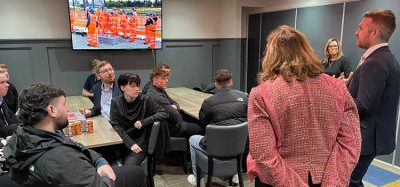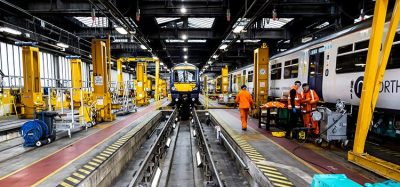Optimising resources for happier passengers and staff
Posted: 30 August 2022 | GIRO, Jean-Marc Pennont | No comments yet
Jean-Marc Pennont, GIRO’s product manager for passenger rail, talks AI and optimisation technologies, and how they are redefining integrated planning and resource management.


Why has there been deep transformation in passenger rail?
Even pre-COVID-19, the industry was already evolving to address challenges such as ageing assets, stricter regulations, growing pressures to optimise costs, and increased workforce demands. Throw in network investments, which impact capacity and in turn, passenger service. As all these constraints intensify, it boils down to resilience. The question is: do you want to thrive or merely survive?
Where do operators need to adapt most?
The pandemic taught us that operators need to be more flexible. A few years ago, the typical urban railway updated their timetables twice a year, only making minor changes for events like track works or extensive disruptions.
Unfortunately, this approach assumes a mostly predictable ridership. Historical ridership models are less relevant now. Planning and delivering high‑quality, cost-efficient passenger services have become incredibly difficult without powerful optimisation software. As everything is interrelated, sometimes, changing a timetable by a few minutes can impact numerous trains and workforce plans.
How can operators make modernising less daunting?
A successful transformation project needs clear goals but also sustained, measurable gains that come early. It also takes strong leadership to secure everyone’s buy‑in. Having an expert team working closely with you to smooth the process also helps.
At GIRO, we have been partnering with operators for more than 40 years, helping modernise and digitalise processes through our HASTUS integrated planning and resource-management optimisation software. With our AI-powered algorithms, operators can resolve critical pain points quickly, such as labour shortages and increasing costs, without losing sight of their global transformation strategy.
Once operators see the degree to which AI and optimisation technologies improve efficiency, they quickly go from “Can we even make this change?” to “Why didn’t we do this sooner?”
Any concrete examples of how HASTUS is being used?
Optimisation is all about using the right resources at the right place and right time, without compromising quality or safety. Operators use the algorithms in HASTUS to optimise operating costs while complying with work and safety regulations, optimise track works, employee experience, and more.
For example, during track works, the HASTUS integrated environment tells users how proposed changes will impact services and critical resources such as the workforce, rolling stock, and track access. This lets users address these impacts in a coordinated manner. They can easily regenerate train plans and employee shifts according to the adjusted timetable, while respecting business rules and controlling costs. Teams get a 360° view of all these critical moving parts, which increases collaboration between internal and external stakeholders.
Optimising resources also means happier passengers and staff. One operator in Europe is using HASTUS to implement a personalised work rostering system to empower staff and improve the employee experience.
How do the algorithms and AI in HASTUS work?
HASTUS is a flexible, modular, off-the-shelf software platform, ready to be configured and parameterised to your needs. It has been used for decades to build plans that meet shifting regulation frameworks, business requirements, and passenger demand. Simultaneously, it considers operational constraints, available resources, and costs. It lets you create multiple “what-if” scenarios and adjust optimisation criteria as needs change.
AI “turbo-charges” algorithms by feeding them more accurate input data. For example, AI improves robustness in train plans by minimising secondary delays, or by better predicting absenteeism during workforce planning.
Where should operators be setting their sights?
On resilience. That is continuously balancing shifting passenger needs with resource constraints, and sharing data seamlessly to give everyone a common view. This was unthinkable pre-AI and optimisation technologies. Now it is best practice.


Related topics
Artificial Intelligence (AI), Digitalisation, Passenger Experience/Satisfaction, Technology & Software, The Workforce







